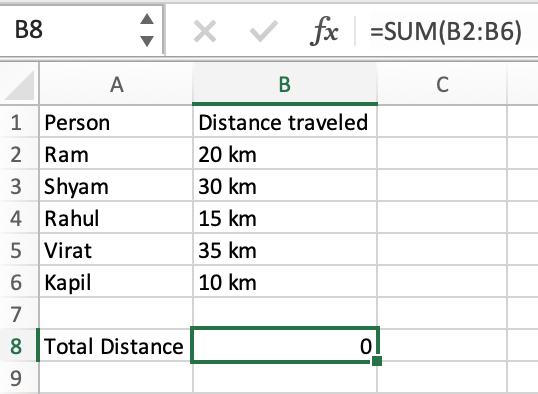Mastering Excel: How to Sum Numbers Instantly

Understanding how to sum numbers in Microsoft Excel efficiently can transform your workflow, enhancing productivity and accuracy in data analysis. Whether you're a student, a business professional, or someone who frequently deals with numerical data, mastering this skill is fundamental to making the most out of Excel's robust capabilities. In this comprehensive guide, we'll delve into various methods to sum numbers instantly, from basic to advanced techniques.
The Basics of Summing in Excel

Before diving into the more complex aspects, let's start with the simplest method:
- AutoSum (Σ): Excel offers an AutoSum feature for quick summing of numbers. Here's how to use it:
- Select the cell where you want the total to appear.
- On the Home tab, click on AutoSum. Excel will guess which cells to sum based on nearby data.
- If Excel's suggestion is incorrect, you can manually select the range to sum.
- Press Enter to get the sum.
Here is a simple table to demonstrate how the AutoSum feature works:
| A | B |
|---|---|
| 20 | 25 |
| 30 | AutoSum would guess B1:B2 as the range here |
| Total | =55 |

Advanced Techniques for Summing

Excel provides several powerful tools for those looking to sum data more intricately. Here are some of the most useful:
Using SUM Functions

Excel's SUM functions allow for more targeted data summing:
- SUM(range): This function sums all the numbers in the specified range.
- SUMIF(range, criteria): Sums cells that meet the criteria you specify.
- SUMIFS(sum_range, criteria_range1, criteria1, [criteria_range2, criteria2], ...): Sums cells based on multiple conditions.
- SUMPRODUCT(array1, [array2], [array3], ...): Multiplies corresponding components in the given arrays and returns the sum of those products.
📝 Note: The SUM function is versatile, but remember that SUMIF and SUMIFS can make your data analysis much more dynamic by allowing conditional summing.
Conditional Formatting for Summing

While not directly a summing tool, conditional formatting can highlight sums or help you visually understand where and how data should be summed:
- Highlight cells that meet certain criteria with color or font changes.
- Use the New Rule option under Conditional Formatting to sum cells based on rules you define.
Pivoting with Excel's Power Query

Power Query, Excel's data transformation and preparation engine, can be used to sum numbers effectively:
- Load your data into Power Query.
- Use Group By to aggregate data, selecting Sum as the operation.
- Load the data back into Excel for further analysis.
Using Macros for Repetitive Summing Tasks

Here's how you can automate summing using VBA (Visual Basic for Applications):
- Open the VBA Editor (Alt + F11).
- Insert a new module (Insert > Module).
- Paste the following code:
Sub SumSelected() Dim sum As Double sum = Application.WorksheetFunction.Sum(Selection) MsgBox "The sum of the selected cells is: " & sum End Sub - Save and run the macro to sum selected cells with a click of a button.
⚠️ Note: Macros can enhance productivity but should be used with caution due to their potential to run malicious code. Always ensure macros are from trusted sources.
In conclusion, mastering the art of summing numbers in Excel opens up a world of efficiency and analytical prowess. From the simple AutoSum feature to the intricate use of VBA macros, there's a technique for every level of user. By integrating these methods into your daily work, you'll not only save time but also gain deeper insights from your data. Remember, practice is key to becoming proficient, so explore these tools and tailor them to fit your unique data needs. Let this guide be your stepping stone to becoming an Excel pro in managing numerical data.
What is the fastest way to sum numbers in Excel?

+
The fastest method for summing numbers in Excel is typically using the AutoSum feature. It quickly calculates the sum of selected cells with minimal user input.
Can Excel sum numbers across multiple sheets?

+
Yes, Excel can sum numbers across different sheets using 3D references in the SUM function. You can reference ranges from various sheets by using the syntax ‘Sheet1:Sheet3!A1:A10’ for example.
How do I sum values only if they meet certain conditions?

+
Use the SUMIF or SUMIFS functions. SUMIF sums cells based on one condition, while SUMIFS allows for multiple conditions, providing a more sophisticated data summing approach.



